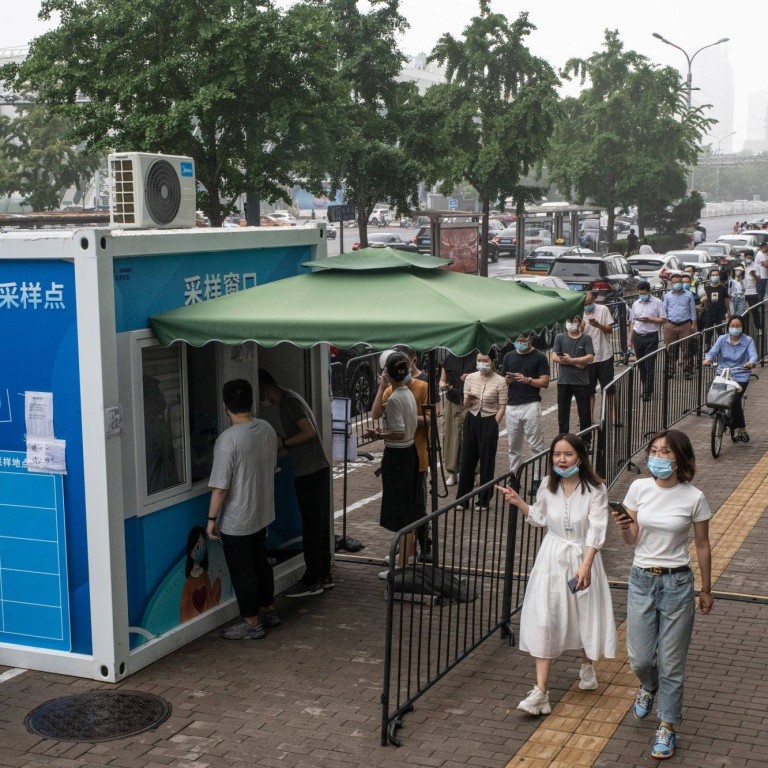
Beijing brings in vaccine mandate as city reports cases of new Omicron subvariant
- From Monday, anyone wanting to enter public places like museums, theatres, stadiums and gyms will need to show proof of vaccination
- It comes as the Chinese capital is facing a new outbreak caused by highly transmissible strain that will again test the zero-tolerance strategy
Anyone wanting to enter public places such as museums, theatres, stadiums, gyms and entertainment venues will need to be vaccinated unless they have a medical exemption, Li Ang, deputy director of the Beijing Municipal Health Commission, told reporters on Wednesday.
Elderly people will also have to show proof of vaccination to enter community facilities such as game rooms.
Previously, people at high risk of contracting or spreading Covid-19 and anyone entering an aged care home had to be fully vaccinated.
The vaccine mandate is in addition to a requirement for Beijing residents to get tested every three days and show a negative result to enter public venues.
BA.4 and BA.5: what we know about the new Omicron subvariants
It comes as the Chinese capital is facing a new outbreak, with three cases reported on Tuesday confirmed as the BA.5.2 Omicron subvariant. The northwest city of Xian in Shaanxi has also reported community transmission of the strain.
BA.5.2 is a sublineage of BA.5, which is now the dominant coronavirus strain in the United States, Britain and Israel. It is also becoming prevalent in other countries, and has been shown to be more transmissible and able to escape immunity from vaccination and previous infections.
Speaking at Wednesday’s briefing, Pang Xinghuo, deputy director of the Beijing Centre for Disease Prevention and Control, said gene sequencing on the three cases showed it was “an imported cluster”.
“The transmission chain is clear, the source is clear,” Pang said. “The outbreak is considered to be controllable overall, based on the existing epidemic development trend.”
Although case numbers in the capital remain low – just 11 in this outbreak as of Wednesday – the highly infectious subvariant will be another test for China’s zero-Covid policy.
New flare-ups elsewhere have prompted more mass testing and restrictions, including in Shanghai, which is still recovering from a costly two-month lockdown that only ended in June. Its cluster has been traced to a karaoke bar that was operating illegally. Twenty-four new cases were reported on Wednesday – the most in three weeks and up from eight the previous day – and widespread testing has been ordered.
Jin Lei, deputy director of the city’s culture and tourism administration, said although entertainment venue operators were keen to reopen, doing so could put Covid-19 control at risk. He said reopening of karaoke bars was on hold for now, but districts would be allowed to gradually reopen other entertainment venues based on the risk. Performance venues and cinemas can reopen from Friday.
Provincial governor Zhao Yide told a meeting on Tuesday that Xian should “race every second and minute” to contact trace and isolate cases and those at high risk to try to contain the outbreak. The city reported 11 cases on Wednesday.
Zhao said other cities should “enter a wartime mode” and treat Covid-19 prevention as “a mission that must be won”.
Meanwhile, in southeastern Anhui province, another 222 cases were reported on Wednesday – down from 231 the day before – most of them in locked-down Sixian. More than 1,000 locally acquired cases have been reported in the province’s latest outbreak.

